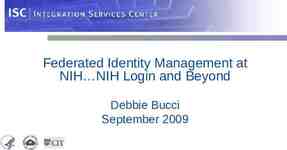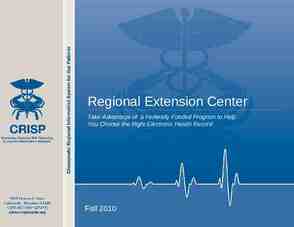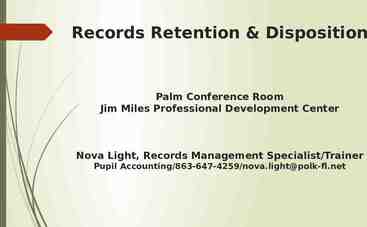Physical Database Design and Tuning Chapter 20 atabase
25 Slides291.50 KB
Physical Database Design and Tuning Chapter 20 atabase Management Systems 3ed, R. Ramakrishnan and J. Gehrke
Overview After ER design, schema refinement, and the definition of views, we have the conceptual and external schemas for our database. The next step is to choose indexes, make clustering decisions, and to refine the conceptual and external schemas (if necessary) to meet performance goals. We must begin by understanding the workload: The most important queries and how often they arise. The most important updates and how often they arise. The desired performance for these queries and updates. atabase Management Systems 3ed, R. Ramakrishnan and J. Gehrke
atabase Management Systems 3ed, R. Ramakrishnan and J. Gehrke
20.1 Database Workloads A workload description includes: A list of queries and their frequencies relations, attributes, attributes in selection (and how selective), attributes in join (and how selective) A list of updates and their frequencies attributes in selection (and how selective), attributes in join (and how selective), type of updates and relations, updated attributes Performance goals atabase Management Systems 3ed, R. Ramakrishnan and J. Gehrke
Physical Design and Tuning Decisions to Make Choice of indexes to create? Should we make changes to the conceptual schema? Which relations should have indexes? What fields should be the search key? Should we build several indexes? For each index, what kind of an index should it be? Clustered? Hash/tree? Consider alternative normalized schemas? (Remember, there are many choices in decomposing into BCNF, etc.) Should we undo’’ some decomposition steps and settle for a lower normal form? (Denormalization.) Horizontal/vertical partitioning replication, views Query and Transaction Tuning atabase Management Systems 3ed, R. Ramakrishnan and J. Gehrke
20.2 Guidelines for Index Selection Whether to index: Choose indexes that speed up more than one query Choice of Search Key Exact-match suggests an index, ideally, a hash index. Range-selection suggests a B tree (or ISAM) index Multi-Attributes Search Keys Conditions in WHERE clause Enabling index-only evaluation strategies Whether to Cluster Range queries benefit most from clustering Index in index-only evaluation strategy need not be clustered atabase Management Systems 3ed, R. Ramakrishnan and J. Gehrke
Guidelines for Index Selection Hash vs. Tree Index B tree is usually preferable Hash index is good for index nested loops join, and for important equality query Balancing the cost of index maintenance If maintaining index slows down frequent update operations, consider dropping the index Adding an index may speed up updating of attributes non-indexed. atabase Management Systems 3ed, R. Ramakrishnan and J. Gehrke
20.3 Index Selection for Joins When considering a join condition: Hash index on inner is very good for Index Nested Loops. Should be clustered if join column is not key for inner, and inner tuples need to be retrieved. Clustered B tree on join column(s) good for Sort-Merge. (We discussed indexes for single-table queries in Chapter 8.) atabase Management Systems 3ed, R. Ramakrishnan and J. Gehrke
SELECT E.ename, D.mgr FROM Emp E, Dept D WHERE D.dname ‘Toy’ AND E.dno D.dno Example 1 Hash index on D.dname supports ‘Toy’ selection. This is selective. Given this, index on D.dno is not needed. Hash index on E.dno allows us to get matching (inner) Emp tuples for each selected (outer) Dept tuple. What if WHERE included: . AND E.age 25’’ ? Could retrieve Emp tuples using index on E.age, then join with Dept tuples satisfying dname selection. Comparable to strategy that used E.dno index. So, if E.age index is already created, this query provides much less motivation for adding an E.dno index. atabase Management Systems 3ed, R. Ramakrishnan and J. Gehrke
SELECT E.ename, D.mgr FROM Emp E, Dept D WHERE E.sal BETWEEN 10000 AND 20000 AND E.hobby ‘Stamps’ AND E.dno D.dno Example 2 Clearly, Emp should be the outer relation. What index should we build on Emp? Suggests that we build a hash index on D.dno. B tree on E.sal could be used, OR an index on E.hobby could be used. Only one of these is needed, and which is better depends upon the selectivity of the conditions. As a rule of thumb, equality selections more selective than range selections. As both examples indicate, our choice of indexes is guided by the plan(s) that we expect an optimizer to consider for a query. Have to understand optimizers! atabase Management Systems 3ed, R. Ramakrishnan and J. Gehrke 1
20.4 Clustering and Joins SELECT E.ename, D.mgr FROM Emp E, Dept D WHERE D.dname ‘Toy’ AND E.dno D.dno Clustering is especially important when accessing inner tuples in index nested loops join. Should make index on E.dno clustered. Suppose that the WHERE clause is instead: E.hobby ‘Stamps’ AND E.dno D.dno If many employees collect stamps, Sort-Merge join may be worth considering. A clustered index on D.dno would help in avoiding sorting Department. WHERE Summary: Clustering is useful whenever many tuples are to be retrieved. (p.659) Check Fig 20.2 in page 660. atabase Management Systems 3ed, R. Ramakrishnan and J. Gehrke 1
Co-clustering two relations Consider the following two relations: Parts(pid: integer, pname: string, cost: integer, supplierid: iteger) Assembly(partid: integer, componentid: integer, quantity: integer) SELECT P.pid, A.componentid FROM Parts P, Assembly A WHERE P.pid A.partid AND P.supplierid ‘Acme’ The index on partid should be clustered Further improvement: Co-clustering store records of two tables together, with each Parts record P followed by all the Assembly records such that P.pid A.partid SELECT P.pid, A.componentid FROM Parts P, Assembly A WHERE P.pid A.partid AND P.cost 10 With co-clustering, the index access for Assembly is avoided atabase Management Systems 3ed, R. Ramakrishnan and J. Gehrke 1
20.7.2 Tuning the Conceptual Schema The choice of conceptual schema should be guided by the workload, in addition to redundancy issues: We may settle for a 3NF schema rather than BCNF. Workload may influence the choice we make in decomposing a relation into 3NF or BCNF. We may further decompose a BCNF schema! We might denormalize (i.e., undo a decomposition step), or we might add fields to a relation. We might consider horizontal decompositions. If such changes are made after a database is in use, called schema evolution; might want to mask some of these changes from applications by defining views. atabase Management Systems 3ed, R. Ramakrishnan and J. Gehrke 1
20.8.5 Masking Conceptual Schema Changes CREATE VIEW Contracts(cid, sid, jid, did, pid, qty, val) AS SELECT * FROM LargeContracts UNION SELECT * FROM SmallContracts The replacement of Contracts by LargeContracts and SmallContracts can be masked by the view. However, queries with the condition val 10000 must be asked wrt LargeContracts for efficient execution: so users concerned with performance have to be aware of the change. atabase Management Systems 3ed, R. Ramakrishnan and J. Gehrke 1
20.9 Tuning Queries and Views If a query runs slower than expected, check if an index needs to be re-built, or if statistics are too old. Sometimes, the DBMS may not be executing the plan you had in mind. Common areas of weakness: Selections involving null values. Selections involving arithmetic or string expressions. Selections involving OR conditions. Lack of evaluation features like index-only strategies or certain join methods or poor size estimation. Check the plan that is being used! Then adjust the choice of indexes or rewrite the query/view. atabase Management Systems 3ed, R. Ramakrishnan and J. Gehrke 1
Rewriting SQL Queries Complicated by interaction of: NULLs, duplicates, aggregation, subqueries. Guideline: Use only one “query block”, if possible. SELECT DISTINCT * SELECT DISTINCT S.* FROM Sailors S WHERE S.sname IN (SELECT Y.sname FROM YoungSailors Y) FROM Sailors S, YoungSailors Y WHERE S.sname Y.sname Not always possible . SELECT * FROM Sailors S WHERE S.sname IN (SELECT DISTINCT Y.sname FROM YoungSailors Y) SELECT S.* FROM Sailors S, YoungSailors Y WHERE S.sname Y.sname atabase Management Systems 3ed, R. Ramakrishnan and J. Gehrke 1
Rewriting SQL Queries SELECT MIN(E.age) FROM Employees E GROUP BY E.dno WHERE E.dno 102 SELECT MIN(E.age) FROM Employees E WHERE E.dno 102 atabase Management Systems 3ed, R. Ramakrishnan and J. Gehrke 1
Rewriting SQL Queries SELECT * INTO Temp FROM Employees E, Departments D WHERE E.dno D.dno and D.mgrname ‘Robinson’ SELECT T.dno, AVG(T.sal) FROM Temp T GROUP BY T.dno SELECT E.dno, AVg(E.sal) FROM Employees E, Departments D WHERE E.dno D.dno and D.mgrname ‘Robinson’ GROUP BY E.dno Does not materialize the intermediate reln Temp. If there is a dense B tree index on dno, sal , an index-only plan can be used to avoid atabase Management Systems 3ed, R. Ramakrishnan and J. Gehrke retrieving Emp tuples in the second query! 1
The Notorious COUNT Bug SELECT dname FROM Department D WHERE D.num emps (SELECT COUNT(*) FROM Employee E WHERE D.building E.building) CREATE VIEW Temp (empcount, building) AS SELECT COUNT(*), E.building FROM Employee E GROUP BY E.building SELECT FROM WHERE AND dname Department D,Temp D.building Temp.building D.num emps Temp.empcount; What happens when Employee is empty? atabase Management Systems 3ed, R. Ramakrishnan and J. Gehrke 1
Summary on Unnesting Queries DISTINCT at top level: Can ignore duplicates. Can sometimes infer DISTINCT at top level! (e.g. subquery clause matches at most one tuple) DISTINCT in subquery w/o DISTINCT at top: Hard to convert. Subqueries inside OR: Hard to convert. ALL subqueries: Hard to convert. EXISTS and ANY are just like IN. Aggregates in subqueries: Tricky. Good news: Some systems now rewrite under the covers (e.g. DB2). atabase Management Systems 3ed, R. Ramakrishnan and J. Gehrke 2
More Guidelines for Query Tuning Minimize the use of DISTINCT: don’t need it if duplicates are acceptable, or if answer contains a key. Minimize the use of GROUP BY and HAVING: SELECT MIN (E.age) FROM Employee E GROUP BY E.dno HAVING E.dno 102 SELECT MIN (E.age) FROM Employee E WHERE E.dno 102 Consider DBMS use of index when writing arithmetic expressions: E.age 2*D.age will benefit from index on E.age, but might not benefit index on D.age! atabase Management from Systems 3ed, R. Ramakrishnan and J. Gehrke 2
20.10 Impact of Concurrency Reducing Lock Durations Make transactions faster Replace long transactions by short ones Build a warehouse Consider a lower isolation level Reducing hot spots Delay operations on hot spots Optimize access patterns Partition operations on hot spots Choice of index atabase Management Systems 3ed, R. Ramakrishnan and J. Gehrke 2
Summary Database design consists of several tasks: requirements analysis, conceptual design, schema refinement, physical design and tuning. In general, have to go back and forth between these tasks to refine a database design, and decisions in one task can influence the choices in another task. Understanding the nature of the workload for the application, and the performance goals, is essential to developing a good design. What are the important queries and updates? What attributes/relations are involved? atabase Management Systems 3ed, R. Ramakrishnan and J. Gehrke 2
Summary The conceptual schema should be refined by considering performance criteria and workload: May choose 3NF or lower normal form over BCNF. May choose among alternative decompositions into BCNF (or 3NF) based upon the workload. May denormalize, or undo some decompositions. May decompose a BCNF relation further! May choose a horizontal decomposition of a relation. Importance of dependency-preservation based upon the dependency to be preserved, and the cost of the IC check. Can add a relation to ensure dep-preservation (for 3NF, not BCNF!); or else, can check dependency using a join. atabase Management Systems 3ed, R. Ramakrishnan and J. Gehrke 2
Summary (Contd.) Over time, indexes have to be fine-tuned (dropped, created, re-built, .) for performance. System may still not find a good plan: Should determine the plan used by the system, and adjust the choice of indexes appropriately. Only left-deep plans considered! Null values, arithmetic conditions, string expressions, the use of ORs, etc. can confuse an optimizer. So, may have to rewrite the query/view: Avoid nested queries, temporary relations, complex conditions, and operations like DISTINCT and GROUP BY. atabase Management Systems 3ed, R. Ramakrishnan and J. Gehrke 2







